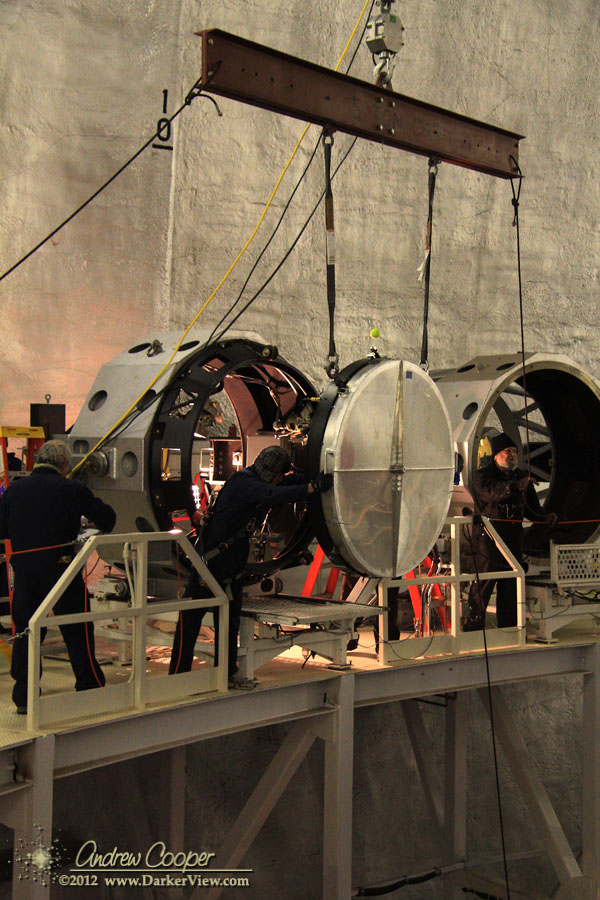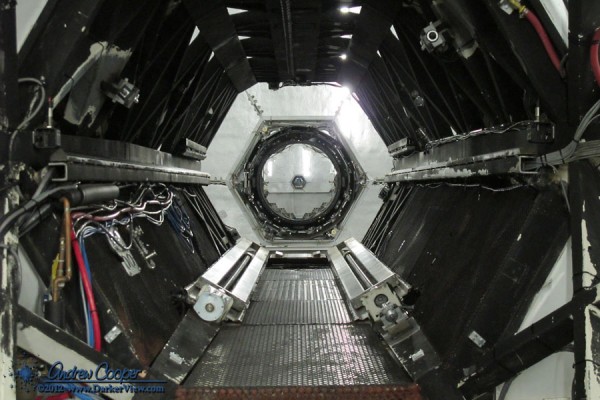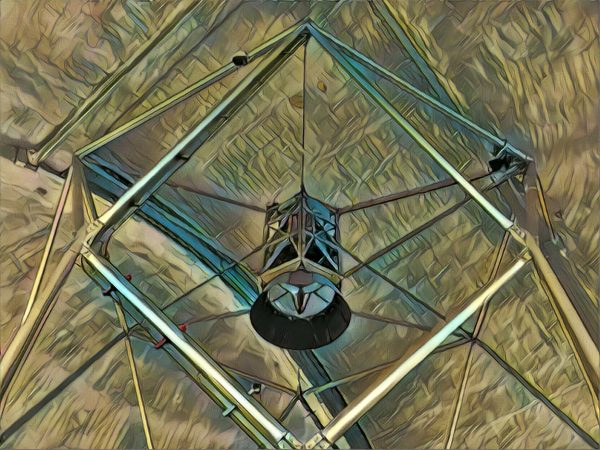
Tag: secondary
A Secondary Mount
The secondary mount is often one of the most complex pieces of a telescope build.
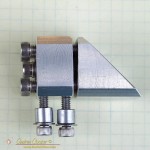
The mount must be small, not blocking any more light than the secondary mirror. It must be adjustable to allow tip, tilt, and centering of the secondary mirror. it must be rigid, able to hold the adjustment precisely once the telescope optical alignments are made.
Thus I have put together a new design for myself, to be used in the 6″ travel ‘scope under construction. The design is simple and robust, a pretty solid little device using the lessons I have learned across the years. It draws upon ideas from many other secondary mounts I have seen.
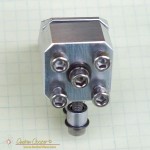
The body is square as this is easier to clamp during each of the manufacturing operations. The square is as large as possible to provide a stable mount, with the corners beveled just enough to stay behind the secondary.
The mount shown here is designed for a 31mm minor axis diagonal mirror. Thus the body of the mount is one inch square with 0.1″ beveled off each edge. This could be scaled up or down for another size diagonal mirror. The overall length of the entire mount is as short as possible. A bar of aluminum was cut to size and beveled first. A four inch bar yielded two complete mounts. I left the machined surfaces a bit rough to break up the smooth surfaces, better to hold paint and to avoid reflections.
There are four adjustment screws here. This allows for a simpler adjustment scheme than a three screw arrangement. With three screws adjustments are often made using all three screws at once. A four screw scheme allows the screws to be adjusted in pairs to effect moves in one axis at a time.

I have made mounts with spring loaded screws in the past. They are easier to adjust, no need to loosen and tighten opposing screws. But they are not as rigid, the careful adjustment more likely to drift. This mount uses pusher screws that must be loosened and tightened in pairs.
Shallow pockets are drilled into the rear of the wedge for the tip of each adjustment bolt. this prevents any rotation of the wedge as long as the adjustment bolts are tight.

Vertical adjustments will be made by adjusting the height of the standoffs used to mount the secondary, or perhaps by shimming with a washer or two. The two mounting screws will sit in slotted holes allowing the secondary to be aligned with the focuser.
The center screw sits in a counterbored hole, only a small section of the shaft near the head is constrained. This allows it to tip slightly and allow the adjustments. A split lockwasher keeps some back tension during adjustments.
The secondary will be attached with RTV adhesive. The corners of the mount line up with the edges of the secondary making alignment quick and simple. All that is needed is a coat of flat black paint on the sides to prevent odd reflections in the optical path.
Postcard from the Summit – Secondary Lift
Postcard from the Summit – Tertiary Tower
Postcard from the Summit – Installing TBAD
Hanging 60ft over the concrete below… fun!
I spent the day drilling and tapping holes into the side of the Keck 2 secondary assembly at the front of the telescope. This is to install two pieces of steel that will serve as a mount for an electronic module behind the secondary mirror. The only way to do this is to climb out onto the secondary assembly. Not a job for anyone that has a problem with heights.
Mind you I am tied to the telescope with safety straps and a full harness. While a fall would not be fatal, it would be an experience in hurt, slammed up against the steel when the straps catch the fall.
The system I am installing is TBAD. I will have to write more about it later, a quick description for now. TBAD is a method of detecting aircraft in front of the telescope, intended to shutter the AO laser before we illuminate an aircraft. It will use a directional antenna to receive transponder transmissions from the aircraft. Of course, the antenna needs to be mounted to the telescope along with the receiver electronics. Thus today’s work.
When you read this I will probably be back at it. Today I will be pulling the cable for the system to the secondary. This is done using our JLG man-lift, a hydraulically powered basket/crane that can access much of the telescope. I think I remember how to drive it…


